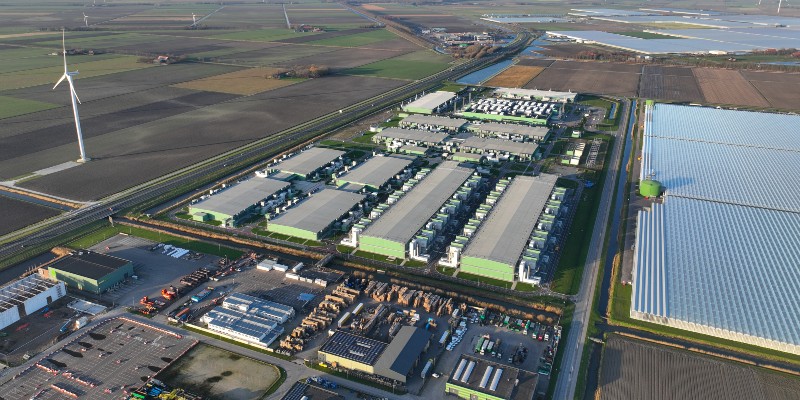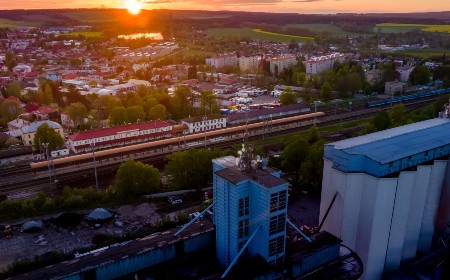
Data centers are essential to all industries, serving as the engine for managing, processing and storing increasing volumes of data and driving technological innovation around the globe.
However, increasingly, data center developments are facing opposition from host communities and other stakeholders – for example, due to potential negative impacts on the environment, loss of land, rising electricity costs, viewshed disruption and lack of direct employment opportunities. To manage these risks more effectively, data center operators and developers need to invest in social performance as a strategic enabler of shared value.
Business impacts of community opposition
The data center market is forecast to grow to $603 bn by 2030, up from $263 bn in 2022, driven by global demand for data, cloud, machine learning and artificial intelligence (AI). However, as the proliferation of data centers continues to grow, so too does community opposition. While many concerns are local, global issues like water and energy use can cause wider scrutiny or opposition and make headlines in national and international media.
Well-publicized opposition to data center development can become politicized, influencing policy thinking and leading to reactive legislative measures, ordinances and regulatory scrutiny. Over the short term, the growth in opposition has been reflected in increased permitting obligations and greater difficulty in justifying new developments and obtaining planning consents. Longer term, as has been seen in Europe, new data center developments may be considered as undesirable by influential politicians, resulting in local or regional moratoria.
Public controversy has created reputational risks. For developers, this may impact the business case for investment or the cost of capital for projects, which are increasingly expected to demonstrate that social value is being created, including tangible local benefits. For investors, it raises potential concerns over the vulnerability of new investments.
Furthermore, increasing environmental, social and governance (ESG) disclosure regulations will heighten scrutiny of companies’ social performance. For example, the EU Corporate Sustainability Reporting Directive (CSRD) requires companies to prepare detailed disclosure of social and environmental risks, impacts and positive contributions - and how they are being managed - starting in 2025.
Building community acceptance of data centers
ERM’s approach to helping data center developers and operators to gain social acceptance involves understanding and engaging host communities early and often. There are four practical steps ERM recommends companies begin with:
- Identify stakeholders who are impacted by and/or have influence on the data center. This is typically done through community profiles and stakeholder mapping - an iterative process involving multi-disciplinary groups with knowledge of the local community. Stakeholder mapping should happen early – at new market entry or site selection due diligence phases - and should be updated and refined at least annually, to support planning and budgeting of engagement activities and priorities.
- Be transparent about potential impacts and invite communities to help shape mitigation measures. Once developers know who the key stakeholders are, they can prepare an engagement plan which includes engagement activities or tactics that facilitate sharing information and discussing priority issues. Again, engagement should happen early, ideally at the new market entry phase.
- Understand the opportunities and risks of the data center from the stakeholders’ perspective. No matter their perspective, it is better for data center companies to be informed of the interests, priorities and relationships of all stakeholders. This information allows the developer or operator to communicate more effectively with communities and regulators on the issues that matter most.
- Build trust through ongoing information sharing, engagement and collaboration. It is good practice to engage stakeholders regarding proposed mitigations and management plans to address community impacts. Where possible, co-creation of mitigation plans can be a mechanism for building relationships and enable stakeholders to participate in addressing impacts. Reporting back to communities on how their input has and continues to shape the data center also helps to build trust.

Valuing and managing social performance
Beyond this basic stakeholder engagement approach, data center developers and operators increasingly need to integrate social impact and risk management into their culture and business model. This requires social performance to be tracked alongside financial and environmental impacts and risks.
In ERM’s experience, a strong social performance strategy requires a corporate-level vision and mandate for strategic engagement. Tech companies can draw from globally accepted social performance standards established by other industries, such as mining to develop best practice. Managing social performance requires a dedicated team, integrated prior to construction through to operations, with opportunities to participate in the decision making and assessment of other departments. Successful social performance management requires companies to:
- Ensure social risks, including potential impacts to both people and the company, are considered within enterprise risk management.
- Determine the social risk tolerance or thresholds of the company and/or data center site. Ensure that there is a framework of risk levels that resonates with the company in a way that issues can be escalated, when needed.
- Use social performance expertise to provide a methodological approach for managing risks and leveraging opportunities.
- Bring together multi-disciplinary teams to regularly assess social risks. These should include internal stakeholders and trusted advisors who are knowledgeable about the communities.
- Incorporate information gained from early and ongoing engagement to assess and manage social risks over time.
Identifying and maintaining a risk register allows companies to proactively address those issues that are likely to result in major consequences to the data center and community. It is also an opportunity to learn what mitigation or enhancement measures are most effective at reducing and managing risks.
Investing strategically in communities to create shared value
Strategic community investments can also be mechanisms to build relevant partnerships and improve the local context, according to the priorities of the host community. By delivering lasting benefits to local people through community partnerships in areas like employment and education or nature conservation, data center developers and operators can partner effectively with communities and establish mutually beneficial relationships.
It is important for companies to go beyond philanthropy and work towards shared value, where both communities and companies benefit in a shared manner. Shared value investments are different from philanthropy, which too often has been shown to be ad hoc and misaligned with community values. In contrast, shared value investment strategies are achieved through co-design in partnership with stakeholders; they focus on advancing economic and social conditions; and they require the measurement of benefits and impacts to society as a whole.
Instead of focusing mainly on short-term outputs, such as community investment spend or number of contracts awarded, companies should seek to drive change by aiming at long-term outcomes. Community investments should be impact-oriented and informed by collective development goals, based on social and environmental data, impact assessments and community engagement. For example, ERM is working with tech clients to assess nature positive opportunities in data center developments. Going beyond minimizing negative impacts and investing in creating positive long-term environmental impacts can enhance community acceptance, especially on brownfield sites.
Other examples of strategic community investments include:
- The DCs for Bees project in Ireland, encouraging bee-friendly planting on both existing and new campus developments. This was later followed by Orchards in the Community, where data center operators collectively funded planting orchards in every county in both the Republic and Northern Ireland to create “pollinator pitstops”.
- The University Technical College Heathrow’s award-winning Digital Futures programme, training young people as engineers in partnership with the data center industry. As well as improving local employment opportunities, it will help to plug the engineering skills gap faced by data centers in the region.
As data center capacity expands rapidly, and facilities are becoming larger and more obvious, host communities are asking legitimate questions about land use, social impacts and consumption of resources like power and water. As a result, social performance has moved up data center developers and operators’ strategic and operational agendas.
Through an effective engagement and management strategy, companies can earn trust and social acceptance by understanding and demonstrating shared value in communities, based on their unique needs and context.
Author contacts
Zoe Mullard - Associate Partner, Social Performance, zoe.mullard@erm.com
Alexandra Guaqueta - Global Leader, Social Impact & Human Rights, alexandra.guaqueta@erm.com
Alison Drury - Global Industry Leader, Technology, alison.drury@erm.com



